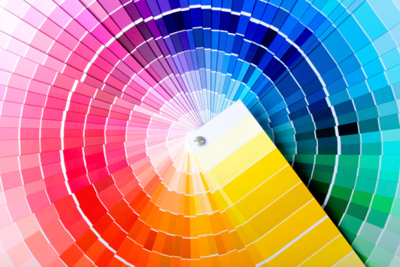
In the realm of high-value gemstones, diamonds reign supreme as the quintessential luxury item. Yet, not all diamonds are created equal. Their worth varies dramatically based on an array of factors, with color being one of the most significant determinants. This article seeks to unravel the intricate hierarchy of diamond colors and shed light on which hue claims the crown as the most expensive. Prepare to delve into the captivating world of colored diamonds, where rarity and brilliance define luxury.
To appreciate the value of colored diamonds, it is imperative to first understand the grading scale that distinguishes these gems. The Gemological Institute of America (GIA) utilizes a classification method that assesses diamonds based on hue, tone, and saturation. While traditional colorless diamonds are graded on a scale from D (colorless) to Z (light yellow or brown), colored diamonds are evaluated differently. Their evaluation hinges on the dominance of color as well as the intensity and purity of that hue.
A captivating aspect of colored diamonds is their extraordinary rarity. For instance, blue diamonds, renowned for their hypnotic hue, are formed through the presence of boron during the diamond’s creation process. Notably, the famed Hope Diamond and the Blue Moon Diamond exemplify the stunning allure of blue diamonds. The unique combination of their captivating color and historical significance contributes to their exorbitant prices. Blue diamonds can fetch prices in excess of $3 million per carat, firmly establishing their status as one of the most coveted shades in the diamond marketplace.
In contrast, pink diamonds possess a tropical charm that enchants collectors and aficionados alike. The mesmerizing pink hue that varies from pastel to vivid is the result of a complex interplay of factors during formation. Their scarcity is palpable: they are unearthed from only a handful of mines, most notably the Argyle mine in Australia, which has unfortunately ceased operations. The closing of this mine has only heightened demand, thereby escalating the price of pink diamonds to staggering heights. Certain rare specimens can command upwards of $4.5 million per carat, placing them firmly in the upper echelon of luxury gemstones.
Yellow diamonds, often the most recognized and accessible among colored diamonds, captivate those who appreciate the warmth of their sunny glow. The presence of nitrogen during formation imbues these stones with their characteristic yellow hue. Although their affordability is more favorable than that of pink and blue diamonds, exceptional yellow diamonds—such as canary diamonds—can still achieve remarkable prices, reaching as high as $1 million per carat for the most vibrant specimens. Their brightness and allure ensure they retain a special place in the affections of gemstone enthusiasts.
Yet, the diamond spectrum does not stop at these popular choices. Green diamonds, known for their verdant brilliance, present a unique case within the colored diamond hierarchy. Formed due to natural radiation, green diamonds possess a color that can vary from faint to deep olive. While less commonplace in the luxury circuit, their unique properties elevate their price considerably, with some outstanding specimens selling for over $3 million per carat. The novelty and rarity of green diamonds render them a fascinating selection for collectors seeking something unconventional and extraordinary.
Equally fascinating are the rare and elusive red diamonds. Regarded as the rarest of all diamond hues, red diamonds capture attention with their intense color that can range from purplish to brownish tones. Their scarcity is nearly mythic; it is estimated that only a handful of true red diamonds exist in private collections. When they do appear at auction, they command astronomical prices, often surpassing $1 million per carat with little hesitation from collectors driven by the desire for uniqueness and prestige.
Another captivating color in the diamond universe is the rich, deep black diamond. Often shrouded in mystique, black diamonds are forged through a different geological process and are studded with inclusions, giving them their dark color. While historically regarded as less valuable than their transparent counterparts, the rise in popularity of black diamonds has seen their market value increase significantly, with exceptional black diamonds selling for upwards of $300,000 per carat.
In parsing through the hues, one cannot overlook the role of celebrity culture and market demand in influencing diamond prices. Iconic celebrities and high-profile figures often adorn themselves with colored diamonds, amplifying their desirability and value. Moreover, the increasing accessibility of information and eagerness of collectors to acquire what is deemed the most exclusive gem plays a significant role in shaping market trends.
Ultimately, the question lies not merely in which diamond is the most expensive but rather what significance each color holds within the grand tapestry of luxury gemstones. Blue and pink diamonds consistently emerge as the titans of the colored diamond realm, with their incredible prices reflecting not only their scarcity and beauty but also the cultural capital associated with owning such extraordinary items. Nevertheless, as market dynamics continue to evolve, the potential for previously overlooked diamonds to rise in value creates an exhilarating yet unpredictable landscape for collectors.
In conclusion, the pursuit of the most luxurious diamond, dictated by color, is akin to a quest for a rare treasure. Each shade tells a story, a narrative steeped in geological marvel and human aspiration. As the diamond industry continues to flourish, it remains an enticing domain brimming with possibility and intrigue—an arena where the brilliance of each colored diamond dazzles, deepening our appreciation for these exceptional gems.
